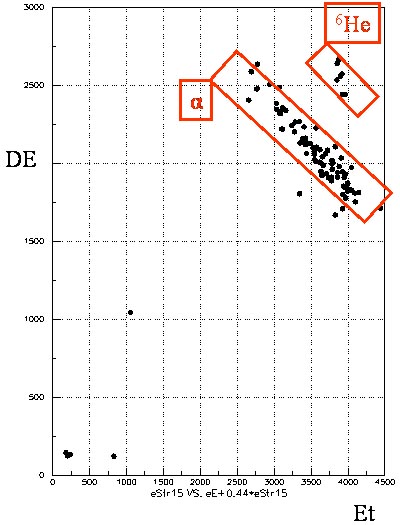Actividad
Particle identification
The figure shows a typical mass spectrum obtained at an angle of 135º in the scattering of a 6He beam on a 208Pb target at 22 MeV. Here we see some elastic 6He events (uppermost corner) as well as 4He fragments (below) arising from projectile break-up in the vicinity of the target.
Particle identification with the DINEX detectors becomes possible using energy loss techniques. For each telescope, the front detector will accumulate a small fraction of the kinetic energy of impinging particle, the rest being deposited in a thick back detector. A plot of the front detector energy (DE) versus the total energy (E) will be proportional to the product M·Z2.
The energy loss technique has demonstrated to be an excellent tool for particle identification at low collision energies. This technique becomes particularly useful in small scattering chambers where time of flight measurements, which usually need a large flying distance, are not sensitive enough.

The data shown in the figure comes from a recent experiment performed at the Cyclotron Research Center in Louvain la Neuve (Belgium) to investigate the effect of the dipole polarizability in the exotic halo nucleus 6He.




